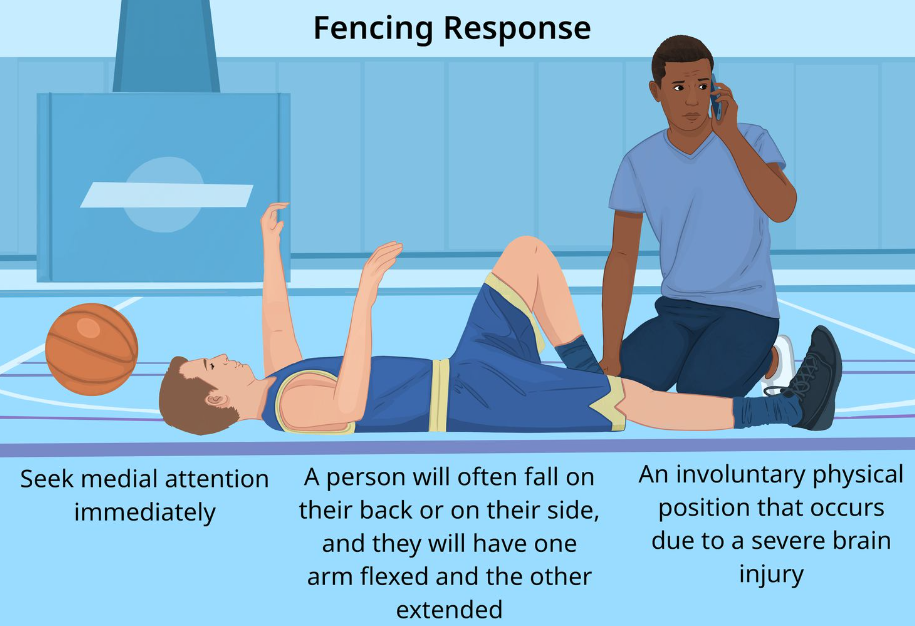BOURSESSENEGAL – The term fencing response might sound unique, but it refers to a fascinating physiological reaction. When faced with a perceived threat or stressor, your body activates this defense mechanism. It’s crucial to understand how the fencing response works and its implications for your health and well-being. In this article, we will explore the fencing response, its triggers, effects, and how to manage it effectively.
What Is the Fencing Response?
The fencing response occurs when your body senses danger or stress. It’s part of the larger fight-or-flight response, which prepares you to either confront a threat or flee from it. During this process, various physiological changes occur, affecting both your body and mind.
The Science Behind the Fencing Response
To grasp the fencing response, let’s dive into the science. When you encounter a threat, your brain perceives danger and triggers the hypothalamus to activate the adrenal glands. This action releases stress hormones, primarily adrenaline and cortisol. These hormones prepare your body for immediate action by increasing heart rate, dilating airways, and redirecting blood flow to essential muscles.
Triggers of the Fencing Response
Emotional Triggers
Emotional stressors often initiate the fencing response. Situations like public speaking, relationship conflicts, or work-related stress can lead to heightened anxiety. Your brain perceives these scenarios as threats, causing the body to react accordingly.
Physical Triggers
Physical threats, such as sudden loud noises or aggressive movements, can also trigger the fencing response. This reaction prepares you to respond quickly, ensuring your safety.
Environmental Triggers
Environmental factors, like extreme temperatures or chaotic settings, may activate this response. Your body instinctively reacts to protect itself from perceived dangers in the surroundings.
Effects of the Fencing Response
Physiological Changes
The fencing response leads to several noticeable changes in your body:
- Increased Heart Rate: Your heart beats faster to pump more blood to vital organs and muscles, preparing you for action.
- Rapid Breathing: Breathing becomes quicker and shallower, allowing more oxygen to enter the bloodstream.
- Muscle Tension: Your muscles tighten, readying your body for immediate physical action.
- Dilated Pupils: Your pupils widen to enhance your vision, helping you assess the situation more effectively.
Psychological Effects
The fencing response can also impact your mental state:
- Heightened Awareness: Your senses become sharper, enabling you to react more quickly to threats.
- Increased Anxiety: While this response can be beneficial in immediate danger, prolonged activation may lead to chronic anxiety and stress.
- Difficulty Concentrating: When your mind is focused on perceived threats, it becomes challenging to concentrate on other tasks.
Managing the Fencing Response
Understanding how to manage the fencing response can significantly improve your quality of life. Here are some effective strategies:
1. Mindfulness and Relaxation Techniques
Practicing mindfulness helps you become aware of your thoughts and feelings without judgment. Techniques like deep breathing, meditation, or yoga can help calm your mind and body. These practices counteract the stress response, bringing you back to a state of balance.
2. Physical Activity
Engaging in regular physical exercise can help mitigate the effects of the fencing . Exercise releases endorphins, which are natural mood lifters. Activities like walking, jogging, or dancing can help reduce anxiety and improve overall well-being.
3. Establish a Support System
Talking about your feelings with friends or family can provide relief. Sharing your experiences helps to process emotions and diminishes the sense of isolation. Building a strong support system encourages healthy coping mechanisms.
4. Limit Caffeine and Alcohol
Both caffeine and alcohol can exacerbate anxiety and stress levels. Reducing your intake can help stabilize your mood and improve your response to stress.
5. Seek Professional Help
If you find the fencing impacting your daily life significantly, consider consulting a mental health professional. They can provide guidance and support tailored to your needs.
The Connection Between the Fencing Response and Stress Management
Understanding the fencing is vital for effective stress management. When you recognize your body’s reactions to stress, you can take proactive steps to mitigate its effects. By employing coping strategies, you can reduce the frequency and intensity of this response.
Developing Healthy Coping Mechanisms
Healthy coping mechanisms can include:
- Journaling: Writing down your thoughts and feelings can help clarify your emotions and reduce anxiety.
- Time Management: Organizing tasks and setting priorities can alleviate feelings of being overwhelmed.
- Hobbies and Interests: Engaging in enjoyable activities can distract you from stressors and promote relaxation.
Conclusion: Embracing the Fencing Response
In conclusion, the fencing response is an essential part of your body’s defense mechanism. While it helps you react to immediate threats, prolonged activation can lead to chronic stress and anxiety. By understanding the triggers and effects, you can take control of your response to stress.
Embrace mindfulness, engage in physical activity, and build a support system to manage your reactions effectively. Remember, recognizing when the fencing kicks in is the first step toward healthier coping strategies. Prioritize your mental health and well-being, and you’ll find greater balance in your life.
REFERENCE : https://www.health.com/



